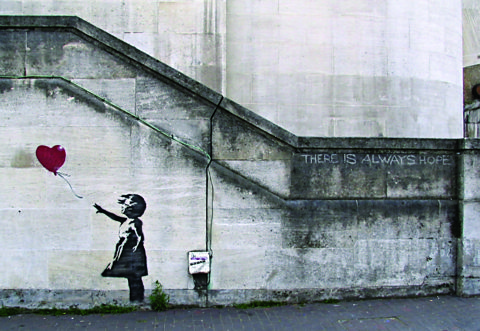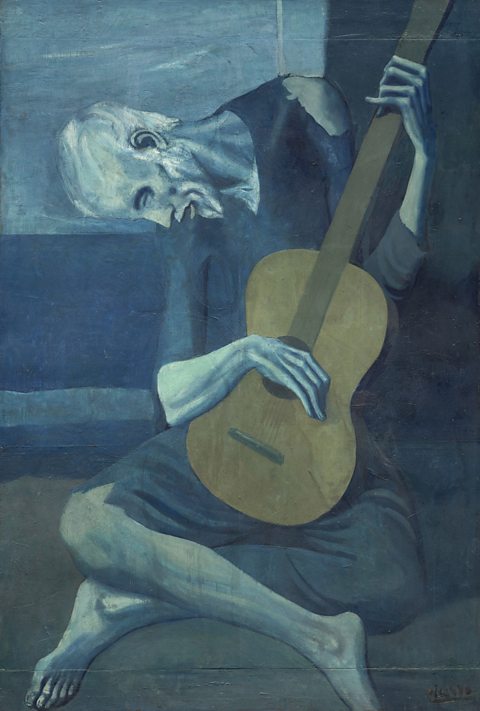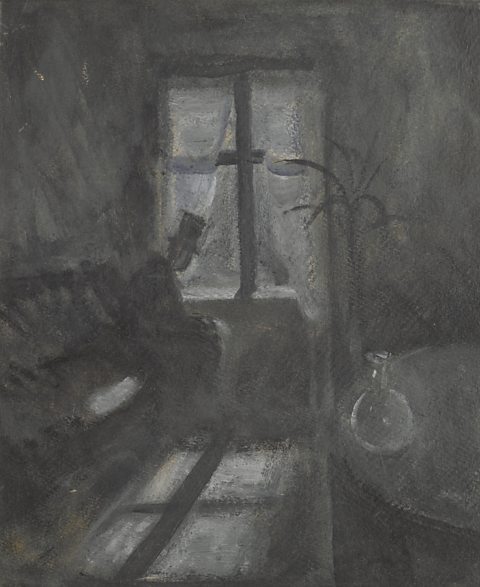Contrast
Emphasis through contrast is when artist and designers draw attention to part of a composition by making it different from its surroundings.
One way to do this is by using a colour placed against a complementary background colour:
- Warm colours jump out against cooler colours
- Intense colours stand out against muted or more neutral tints, shades and tones

Girl with a Balloon by Banksy (2002) shows how colour can create emphasis. The focal point is the red balloon because it is a warm, intense colour. It stands out against the plain, grey background.
The girl is the only figure in the painting and as such our attention should be on her. However, she is painted with black paint that ties in with the grey background. She becomes a secondary focus to the bright red balloon.

In The Old Guitarist (1903-04) Pablo Picasso has used colour to create emphasis.
The man and background have been painted using tones of blue. Blue is a cold colour, and as a result it retreats on the canvas.
In contrast, the guitar is painted in orange-brown colours. These are warmer and stand out on the canvas. The position of the guitar near the centre of the painting and the warm colours it is painted in make it the focal point of the painting.

Contrasting tones of light and dark can also create emphasis.

Moonlight (Night in Saint-Cloud) by Edvard Munch (1892) uses light and dark to create emphasis. The contrast between the shadows and highlights are extreme, creating silhouetteA (usually dark) shape or outline with no additional features.. The eye is drawn to the window and the light it casts on the floor.
The emphasis is on the figure at the window, whose silhouette interrupts the highlighted area in one of the window panes.
This technique creates intrigue and interest in a sketch with few other discernible details.
